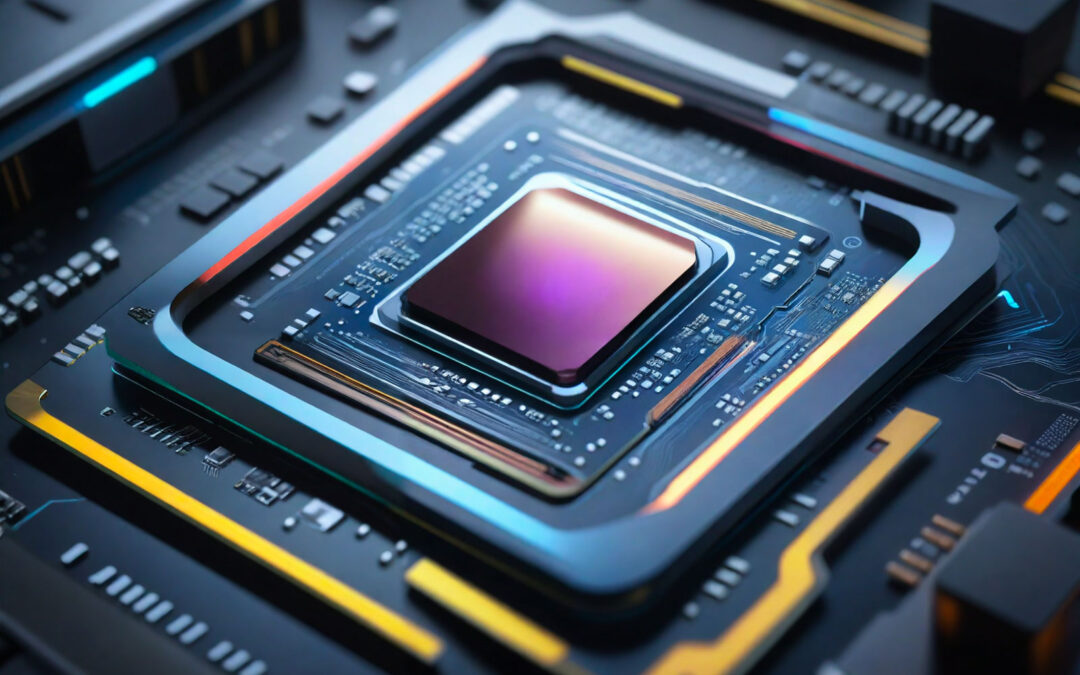Introduction
The AI chip market, a cornerstone of technological innovation and industrial growth, is witnessing a seismic shift with Intel’s recent foray into this competitive arena. This development promises to reshape the landscape dominated by giants like AMD and Nvidia. In this article, we delve into the implications of Intel’s bold move and its potential impact on the AI chip industry.
Section 1: The AI Chip Market Landscape
The Titans of Technology: AMD and Nvidia
AMD and Nvidia have long been the torchbearers in the AI chip market, powering everything from data centers to gaming consoles. Their dominance is not just about hardware; it’s about setting benchmarks in AI and machine learning applications. The AI chip market is not just a playground for tech giants; it’s a battleground for innovation, driving sectors from automotive to healthcare.
AI Chips: The Heartbeat of Modern Industries
AI chips are more than just processors; they’re the brains behind the AI revolution, powering applications like autonomous vehicles, smart homes, and personalized medicine. The global AI chip market is on a steep upward trajectory, with experts predicting its value to reach staggering heights in the coming years.
Section 2: Intel’s Entry into AI Chips

Breaking New Ground: Intel’s Announcement
At the recent “AI Everywhere” event, Intel unveiled a constellation of new AI chips, signaling a major strategic shift. These chips, designed to cater to a wide range of AI applications, represent Intel’s commitment to becoming a key player in the AI hardware landscape.
Comparing Giants: Intel vs. AMD and Nvidia
Intel’s new AI chips boast features and capabilities that could potentially rival those of AMD and Nvidia. The question on everyone’s mind is: How do these chips stack up against the established players? We take a closer look at performance, efficiency, and application support.
Section 3: Potential Impact on the AI Chip Market

Shifting Dynamics: Intel’s Market Challenge
Intel’s entry could significantly alter the market dynamics, introducing new competition and possibly leading to innovations and price adjustments. This move could be a game-changer, not just for Intel but for the entire AI chip market.
Challenges and Opportunities for Intel
While the potential is immense, Intel faces several challenges, including breaking into a market with well-entrenched competitors. However, Intel’s vast experience in chip manufacturing and its R&D capabilities present unique opportunities for innovation and market penetration.
Expert Opinions: The Future of the AI Chip Market
Industry experts weigh in on what Intel’s entry means for the market. Predictions range from heightened competition leading to rapid advancements, to potential collaborations that could redefine AI chip technologies.
Section 4: Implications for Consumers and Businesses
A New Era for AI Applications
Intel’s entry into the AI chip market is set to have far-reaching effects on both businesses and consumers. The introduction of these chips could lead to more diverse and efficient AI applications, impacting sectors from retail to robotics.
Choosing Sides: Intel, AMD, or Nvidia?
With Intel joining the fray, consumers and businesses will have more options when it comes to AI hardware. This competition could lead to better performance, lower prices, and more tailored AI solutions across various industries.
Section 5: Conclusion
As Intel embarks on its journey in the AI chip market, the industry stands on the cusp of a new era. This move could redefine market dynamics, drive innovation, and open up new possibilities in AI applications. The battle of the titans – Intel, AMD, and Nvidia – is not just about who leads the market, but about shaping the future of AI technology.
